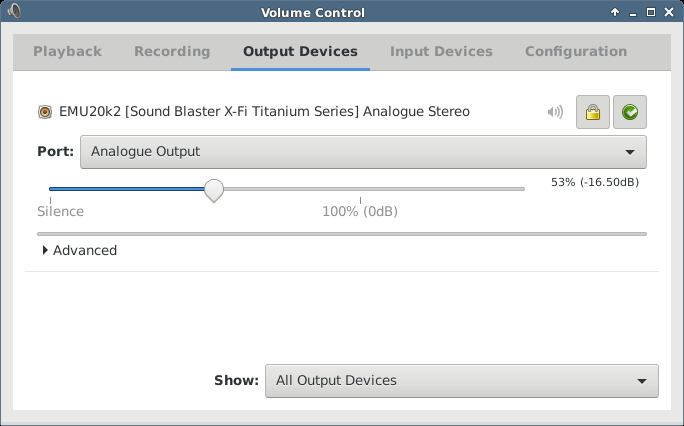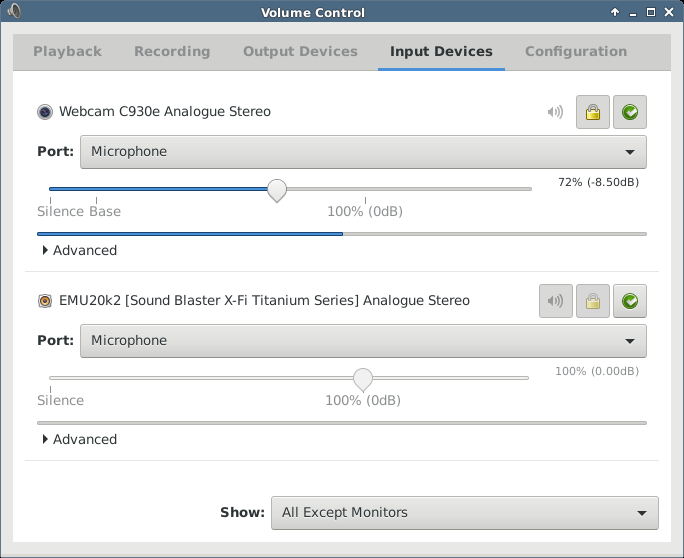Audio on TCM's desktops
Linux and audio have a deservedly bad reputation, and TCM's computers were not purchased with audio as a particularly high priority. That said, the majority are capable of video conferencing.
The desktop PCs fall into one of three categories:
- front and back panel 3.5mm audio sockets work
- only the rear 3.5mm audio sockets work
- no audio
The command
$ hwinfo --sound --short
can generally determine whether audio exists. For PCs with working analogue audio output it will generally list two devices. A line containing "HDMI" or "Radeon" refers to digital audio output over the HDMI link to the monitor. As we do not connect our monitors via HDMI (to leave their HDMI ports free for laptops), this is useless. However, a line reading something like any of:
Intel [...] High Definition Audio Controller Creative Sound Blaster Creative SB1040 C-Media Electronics CMI8788 AMD Audio device
should mean that the PC can produce audio output. To hear it one will need to plug headphones into the correct socket (generally green). (A few of our monitors have speakers and a 3.5mm audio input socket if one wishes to entertain a whole room.)
If your computer lacks an audio device (because Intel does not believe in putting them on "professional" motherboards, and we did not always bother to purchase extra cards), then you may wish to use pc52 instead.
For audio input, one can try plugging a microphone into the neighbouring (red) 3.5mm socket, or use a USB UVC device. There should be a couple of webcams around TCM which support the UVC standard and which can act as both microphones and cameras.
The next task is ensuring that Linux uses the correct device, and
correct output port. The easiest program for this is
probably pavucontrol.


And, in theory, web-based video-conferencing applications, Skype,
and all similar programs, should work. In practice, it all seems
rather unreliable, and one is well advised to test lots. Youtube
provides a ready test of audio from a web-browser, for testing
cameras options include guvcview
and cheese, and, for testing microphones, the bar
immediately above the word "Advanced" in pavucontrol
shows the currently-received sound level.

Of course, you may find personal laptops to be more convenient for audio work.
(Why is Linux in TCM so unreliable in this regard? It does not help that you may use your account on multiple computers with very different audio hardware, and that multiple people may log on to your computer and expose its hardware to their configurations. Single-user laptops are easier!)